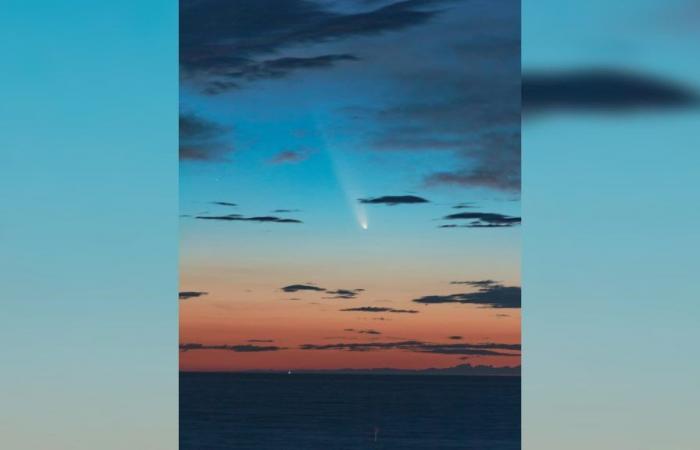Comet Tsuchinshan-Atlas has been visible from the northern hemisphere since Saturday October 12. It will still be there for around ten days while decreasing in brightness.
A magnificent spectacle. The comet Tsuchinshan-Atlas, nicknamed the “comet of the decade” was visible to the naked eye on Saturday October 12 evening in the French sky and will continue to be there for around ten days, according to scientists.
A few lucky people managed to capture this moment. In a photo taken above Capbreton, in the Landes, and shared by an Internet user on X, we can observe a white spot crossing the sky between blue and red, leaving a luminous trail in its path.
Other keen observers were able to see the comet pass through the sky of Vienna, despite the clouds, while after passing over the southern hemisphere, it has only been visible from the northern hemisphere since Saturday.
“A drop in brightness” in the coming days
Detected in January 2023 by the Chinese Purple Mountain Observatory, called Tsuchinshan, hence part of its name, the comet was observed by a telescope from the South African ATLAS program, which gave it the second part of its name. .
This small body of rock and ice will be “a little higher” in the sky every evening, observable by looking to the West “for around ten days”, explained to Agence France Presse Eric Lagadec, astrophysicist at the ‘Observatory of the Côte d’Azur. But you better hurry up and try to see her.
Because “each day it will decrease a little in brightness” as it moves away from the Sun, warns the scientist.
A journey measuring up to 400,000 times the Earth-Sun distance
Barring obstacles on its route modifying the trajectory, Tsuchinshan-ATLAS follows an orbit which should not bring it closer to the Earth for 80,000 years, specifies this comet specialist.
Based on the comet’s orbit and certain models, it is estimated that it could have been up to 400,000 times the Earth-Sun distance before reaching us.
A journey counting in millions of years for this comet which probably saw the light of day in the Oort cloud, a hypothetical and gigantic assembly of tiny planets and celestial bodies, at the edge of the solar system.






